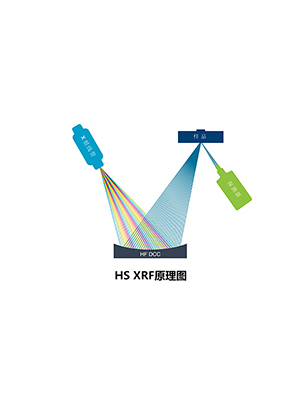-

It is known that the X-ray spectrum emitted by the X-ray tube consists of the characteristic lines of the target elements and the continuous spectrum of Bremsstrahlung radiation. The scattering of continuum of Bremsstrahlung radiation on the sample is the main source of background of the spectrum of the measured element in the X-ray fluorescence spectrum analysis and is the most important factor that affects the detection limit of trace elements.
Therefore, the ideal excitation source for exciting sample elements should have the following characteristics:
• Single energy incidence (monochromic incidence) onto the sample, reducing the background interference of the continuous line to the measured element;• The incident energy is slightly higher than the absorption edge of the element to be measured, resulting in high excitation efficiency;
• Highly incident and stable excitation source to increase the fluorescence intensity of the test element;
• The incident energy is focused on the smaller point or surface of the sample, which facilitates the collection and detection of elemental fluorescence rays;
The Johansson type DCC is an ideal excitation source with all of the above features. DCC can monochromate the X-ray emitted from the X-ray tube and focus the incident X-ray on the small surface of the sample. At the same time, the double-curved bending crystals with different angles and materials can be used to select different wavelengths of radiation to achieve the ability to selectively and efficiently excite elements in the sample.
The Johansson-type DCC is able to monochromatize and focus high intensity, characteristic X-rays emitted by a microfocus spot X-ray tube to a focal plane of several tens to several hundreds of micrometers in diameter by Bragg diffraction, thus performs single-wavelength excitation of the elements in the sample. Since there is no longer a continuous spectrum incident on the sample, theoretically the characteristic lines of the measured element do not have continuous scattering background interference, and thus have excellent peak-to-back ratio, extremely low detection limit, and can qualitatively and quantitatively detect trace or even trace elements.
• Johansson-type DCC, can accurately focus the X-rays emitted by the micro-focus spot X-ray tube to the tiny focus point, achieving high X-ray flux and monochromatic incidence;
• Multiple pieces of crystals can be stitched in both Roland's circle direction and rotation direction, multiplying the solid angle of diffraction;
• Monochromatic X-rays are incident on the sample and excite specific elements in the sample, which greatly reduces the continuous background caused by the continuous spectrum of the X-ray tube to the detection element, enabling precise quantitative analysis of trace elements and even trace elements.
• Tiny focus points for precise quantitative analysis of micro areas, especially for the analysis of trace elements;
• Long service life, long-term use will not result in reduced performance;
• The choice of different materials and design angles can diffract the characteristic lines of different targets;
• Low background XRF: single wavelength excitation X-ray fluorescence spectrometer, Monochromatic XRF;
• Wavelength Dispersive X-Ray Fluorescence Spectrometer: Increased diffractive solid angle wavelength dispersive X-ray fluorescence spectrometer;
• Micro-analysis: Micro-area elemental analysis with micro-focus spot X-ray tubes;
• Elemental Imaging: Together with the microscope, it forms a high-precision, high-sensitivity (sub-ppm), high spatial resolution elemental imaging system;
• Total reflection XRF: Elemental composition analysis with very low detection limits (ppb level);
• XRD: Improves the diffraction performance of X-ray spectra;
- HOME
-
PRODUCT
- SOLUTION
-
- ENVIRONMENTAL PROTECTION
- Real-time monitoring solutions for heavy metal emissions in air and water
- Detection of heavy metal content in soil environment
- Simultaneous determination of solid waste (S, Cl, F)
- Analysis of soil nutrient content
- Detection of toxic elements in solid waste and hazardous waste
- Emergency monitoring of Heavy Metals in Environmental water quality
- PM2.5 air filter membrane inorganic element content analysis
-
- METALLIC ORE
- Cu/Cr/Ni/Mn Ore Element Content Detection
- Elemental content analysis of Copper concentrates
- High purity metal (alloy) content analysis
- Elemental content analysis of slag samples
- Rapid determination of precious metal content in ternary catalyst
- Determination of element content in magnesite and magnesite
- Rapid analysis of rare earth elements content
- Rapid trace precious metal content testing
- XRF LIBRARY
- SERVICE&SUPPORT
- ABOUT ANCOREN

